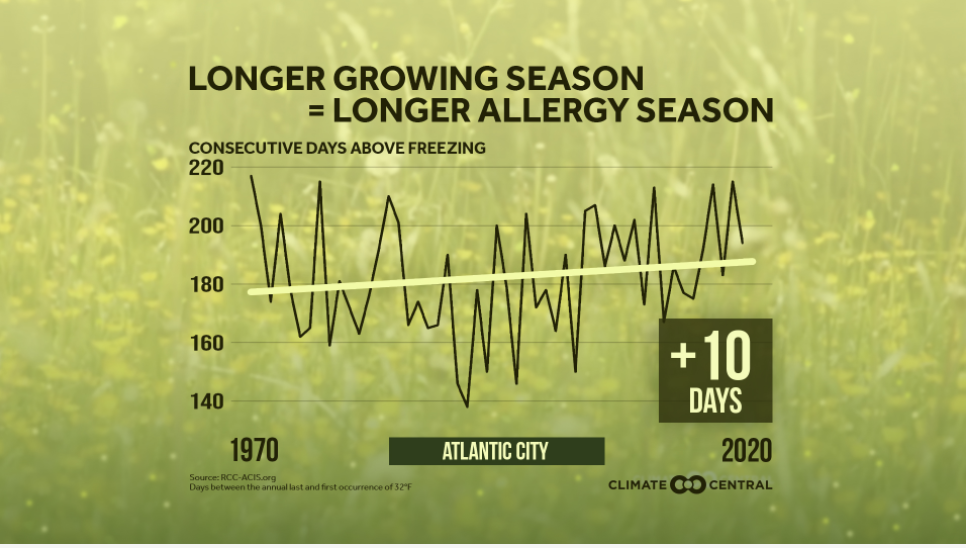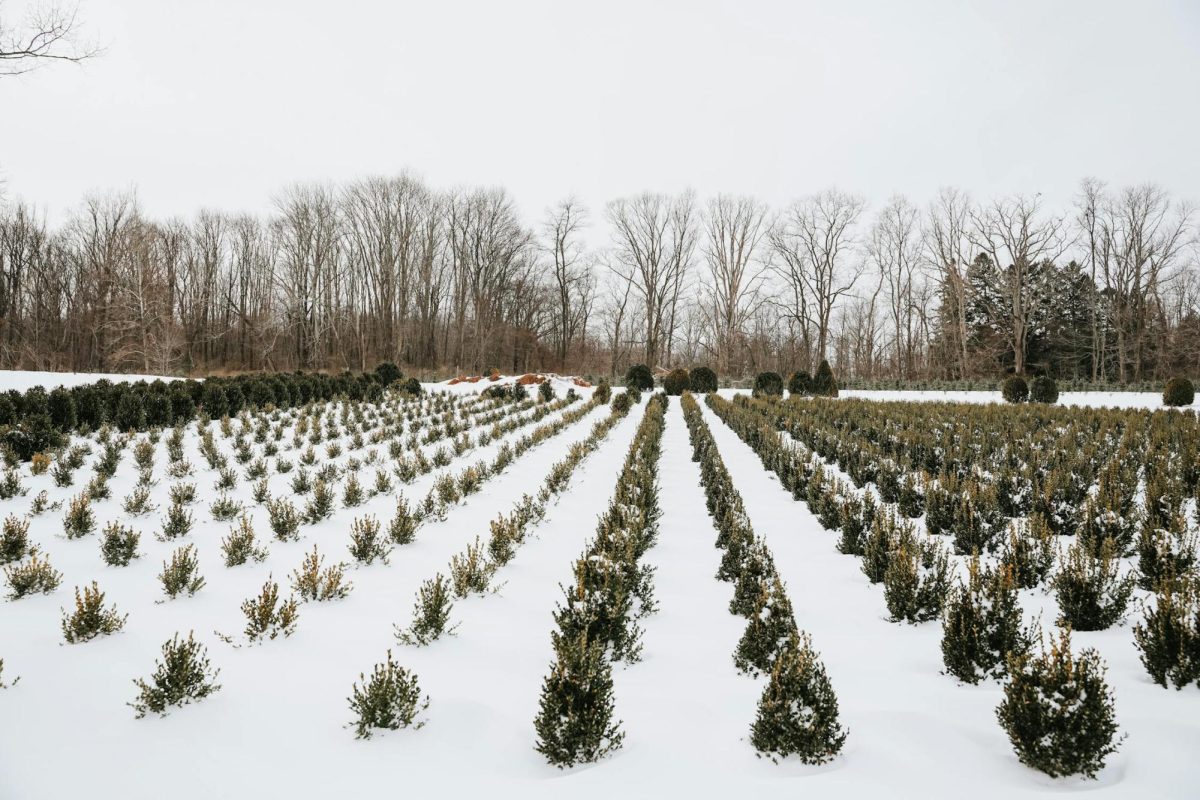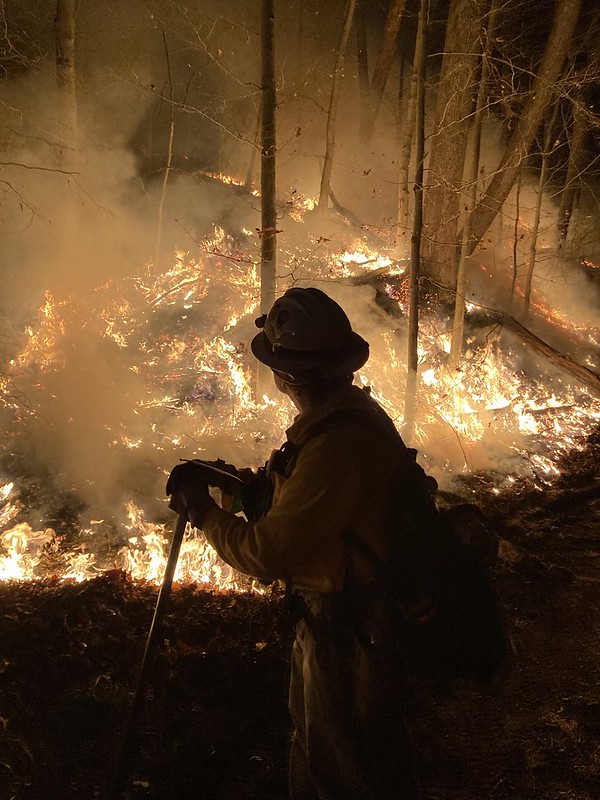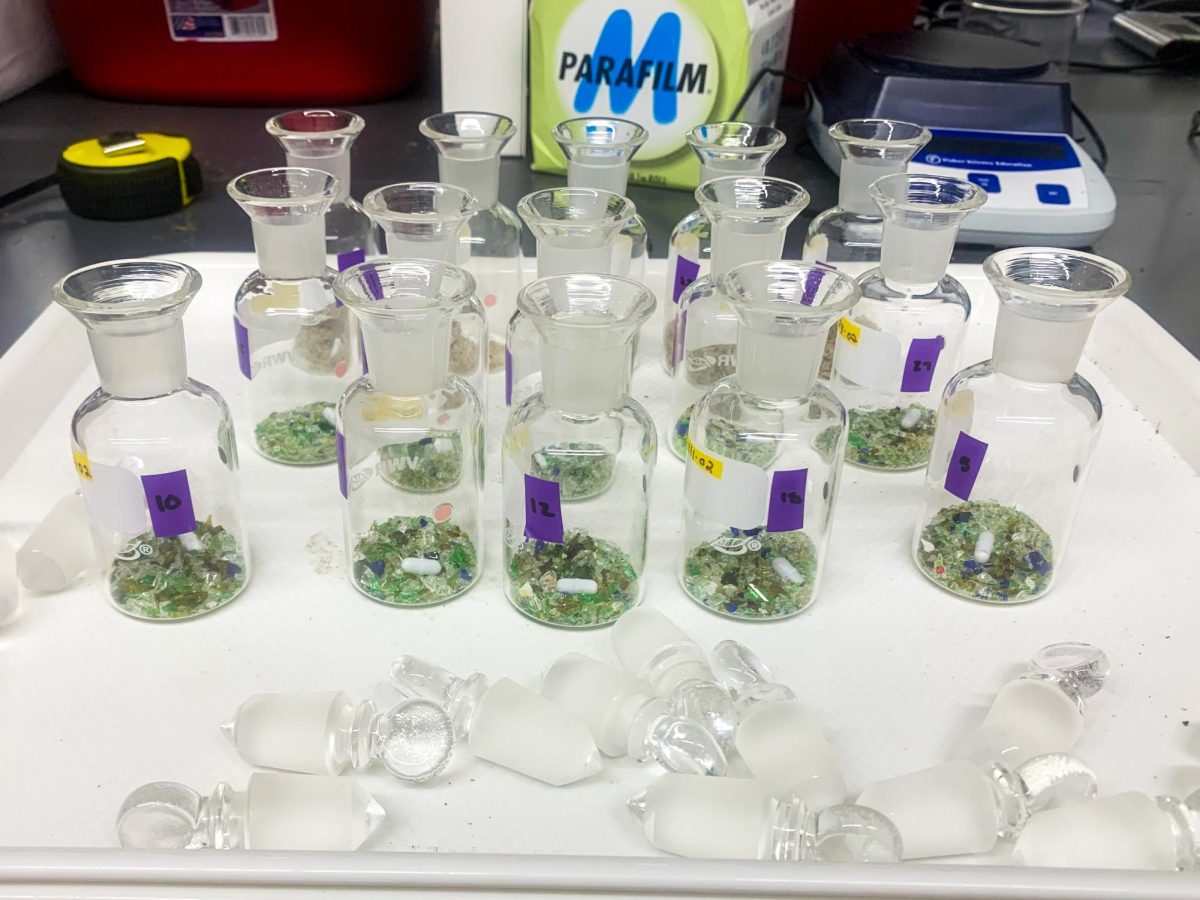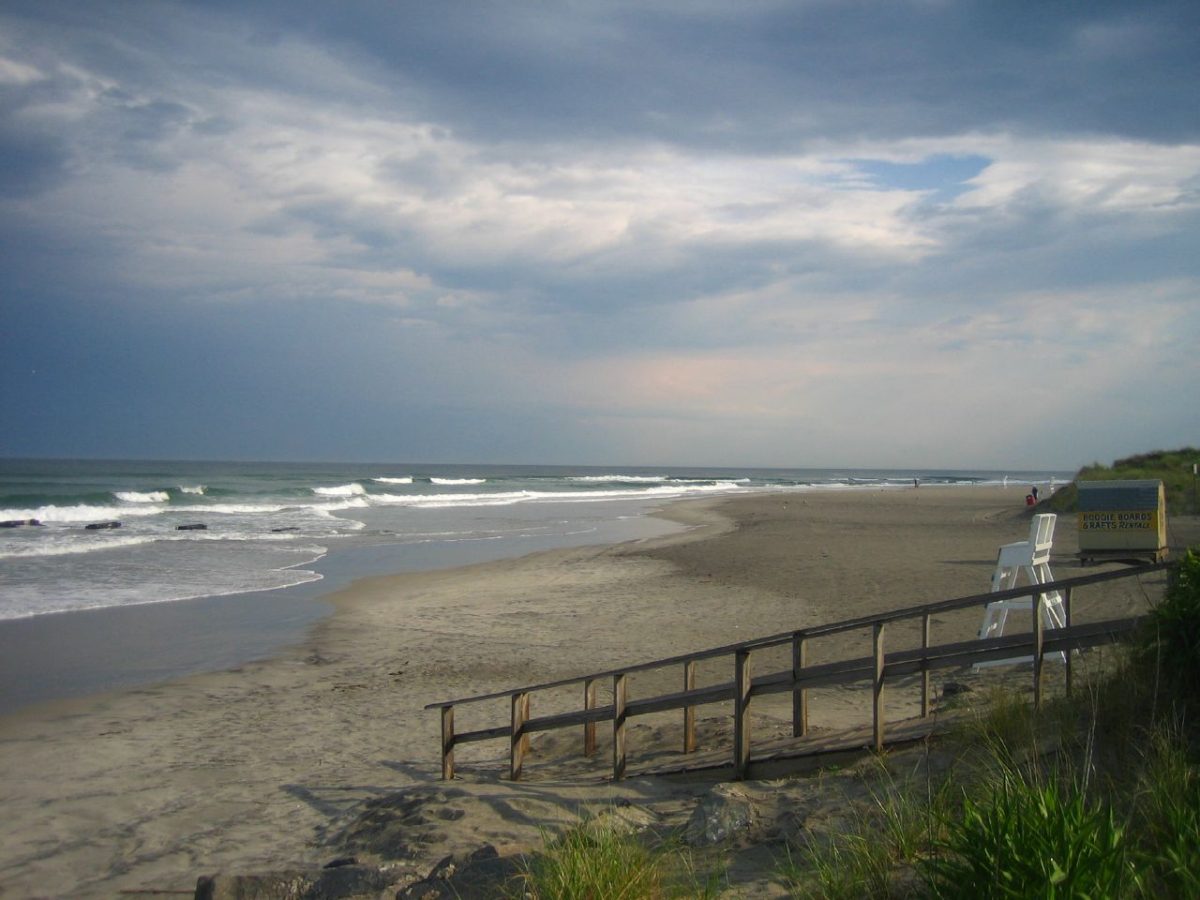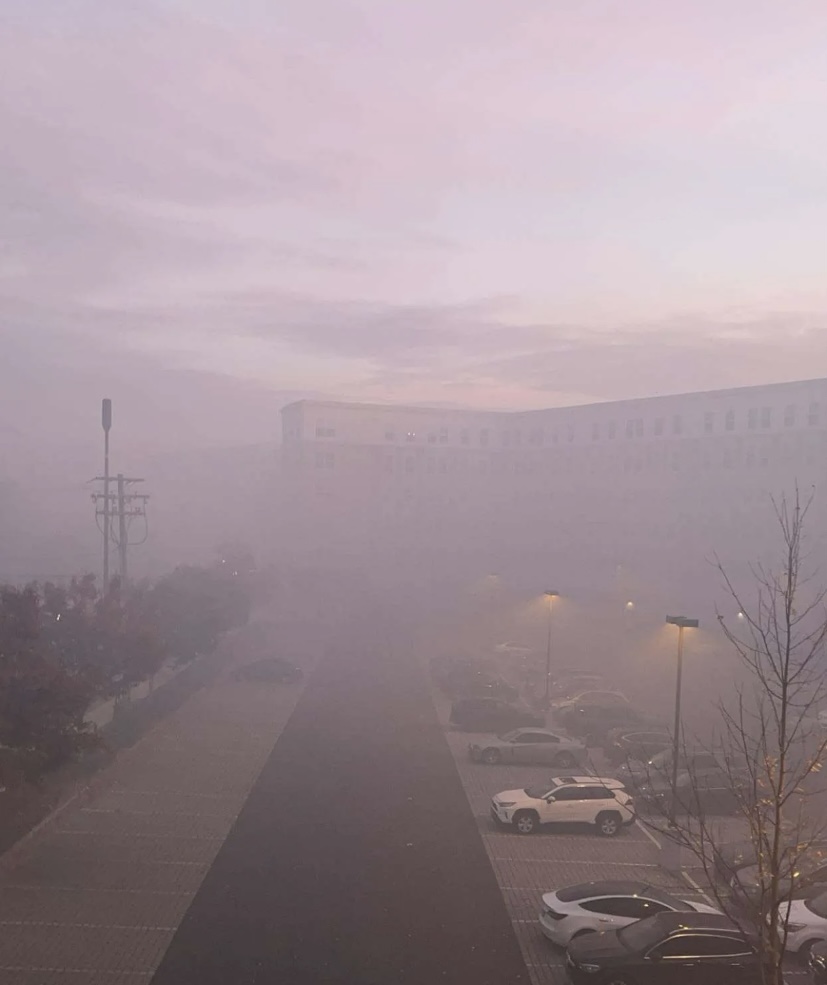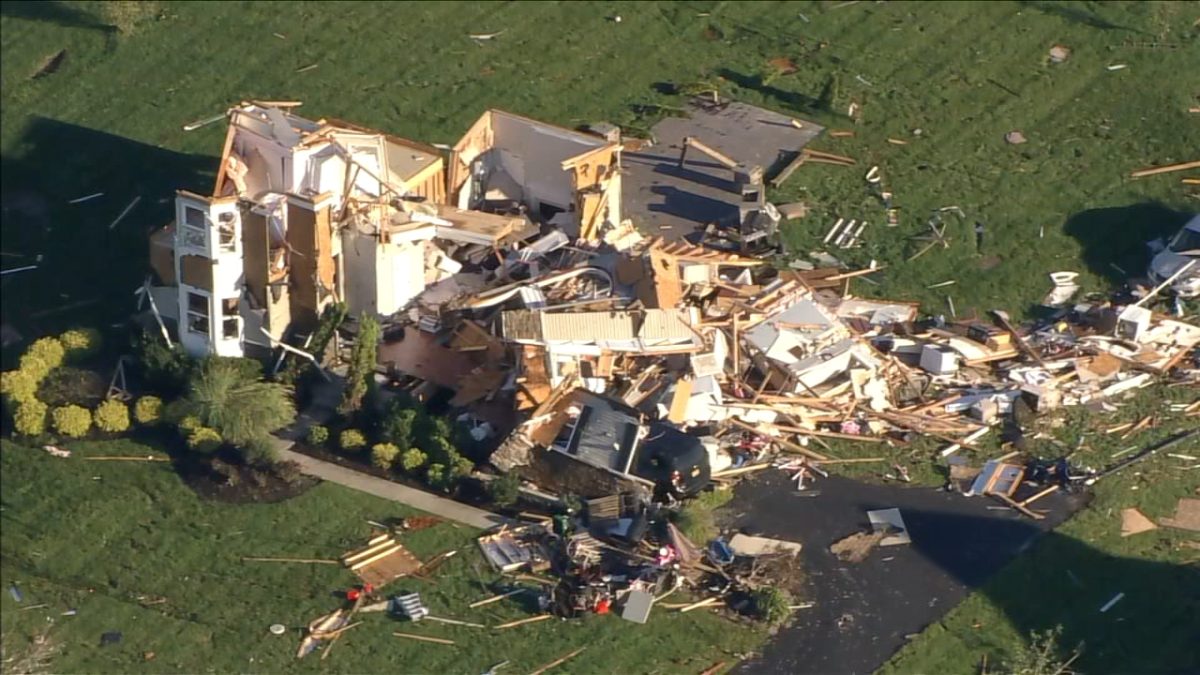As springtime arrives, so does the dreaded allergy season. According to the Centers for Disease Control and Prevention (CDC), more than 25 million Americans have seasonal pollen allergies. Millions of people are suffering every year, and climate change is only making it worse.
According to a new study, rising temperatures from human-induced climate change are the dominant contributor to recent changes in the timing and length of the pollen season in North America. Spring-like temperatures are arriving earlier in the year, and fall-like temperatures linger later, therefore, the growing season (the time between the last spring freeze and first fall freeze) and pollen season are getting longer.
Climate Central examined the length of the growing season for more than 200 locations. Over the past half-century, the season lengthened in 82% (166 of 203) of the places analyzed. It also extended by at least four weeks in 38 of those places, with Bend, Ore. and Reno, Nev. tying for first place with 99 additional growing season days.
But the impacts of climate change on seasonal allergies don’t just change the start time or length of pollen season, they also intensify it. The amount of carbon dioxide in the atmosphere directly impacts pollen concentrations because it can stimulate plant growth. One study reported that grass pollen levels doubled when carbon dioxide levels were increased from current levels (about 400ppm) to 800ppm. Such high levels of carbon dioxide, and pollen, are possible at the end of the century if current emissions trends continue and new mitigation efforts are not implemented. However, new analyses suggest that the US can meet the goals of the Paris Climate Accord and reach net-zero emissions by mid-century, leading to fewer additional allergy and asthma attacks.
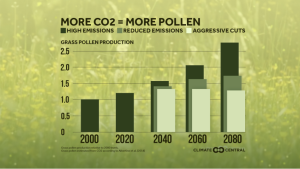
Many people may experience allergies as a minor inconvenience, but seasonal allergies can have serious consequences and decreased quality of life for those with respiratory problems like asthma. About 60% of the 25 million Americans with asthma have allergic asthma一where pollen can trigger an asthmatic attack. With a longer pollen season and high pollen concentrations, asthma and allergy reactions can become even more severe and expensive to treat一and unfortunately this burden is placed on the most vulnerable populations. In the U.S., the total cost of allergies is more than $18 billion a year and the medical cost of asthma is just above $3,200 per year per person. Effective medications and therapy to manage symptoms can be a burden on lower-income families, especially since asthma is more prevalent in families living below the poverty line. Currently, the highest asthma diagnoses, hospitalizations, and deaths are disproportionately found in minority communities (Black, Hispanic, and American Native/Alaskan Native) due to a combination of determinants. One example is discriminatory housing policies restricting minorities to older, less ventilated homes and neighborhoods with elevated levels of air pollutants.
KEY CONCEPTS
- The dreaded allergy season is upon us and climate change will only make it worse for allergy and asthma sufferers.
- Rising temperatures from human-induced climate change are the dominant contributor to recent changes in the timing and length of the pollen season in North America. Over the last half-century, the growing season (and the pollen season) lengthened in 82% of the cities Climate Central analyzed.
- The amount of carbon dioxide in the atmosphere also directly impacts pollen concentrations because it can stimulate plant growth. As carbon dioxide levels rise due to the burning of fossil fuels, pollen concentrations will increase and the allergy season will worsen.
- Seasonal allergies can have serious consequences for those with respiratory problems like asthma. A longer allergy season and higher pollen concentrations will put a burden on the most vulnerable populations, including lower-income and minority communities.

